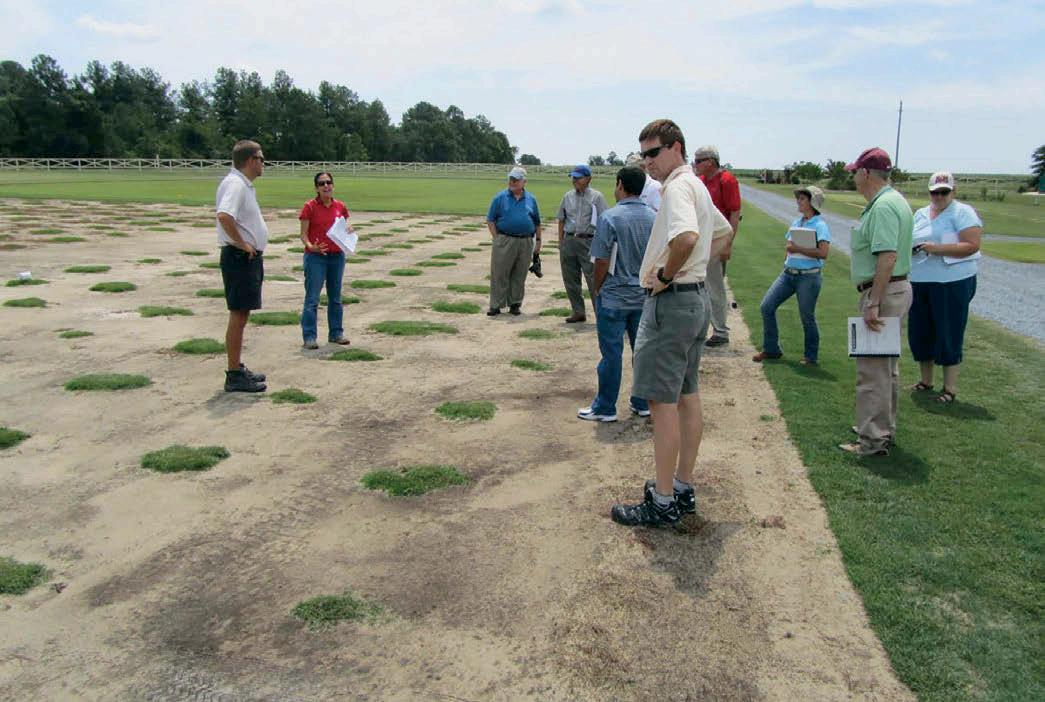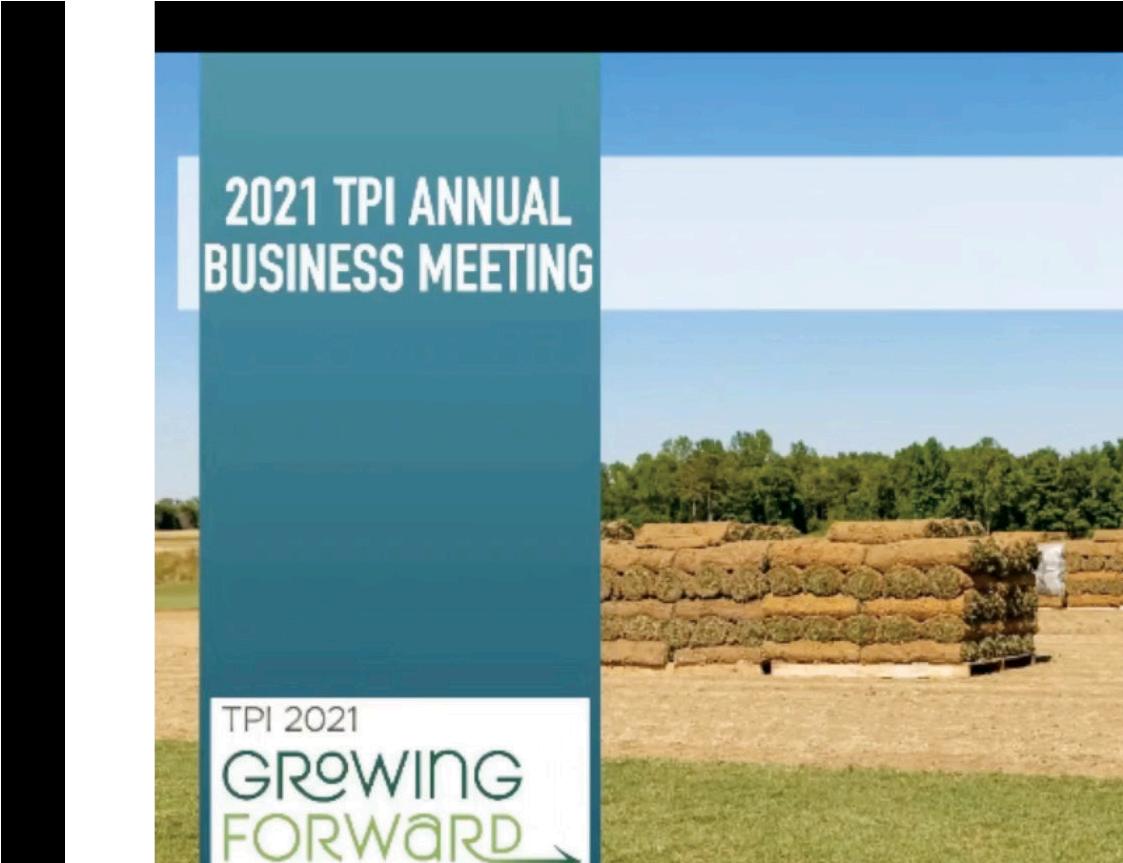
6 minute read
Covering Ground with Natural Grass Sod and Crop Insurance
by TPIturfnews
COVERING GROUND WITH
NATURAL GRASS SOD AND CROP INSURANCE
By Richard Flournoy
Editors’ note: USDA’s Risk Management Agency (RMA), serves America’s agricultural producers through effective, market-based risk management tools to strengthen the economic stability of growers and rural communities. TPI has been working with RMA staff to discuss current risk management products as well as to explore the potential for new options for natural grass sod producers.
I was very pleased that we recently had a chance to talk with Turfgrass Producers International about crop insurance options and future possibilities for America’s sod producers. At the USDA’s Risk Management Agency, our team continually seeks to work with organizations like TPI to expand the Federal crop insurance program and improve upon the risk management products we offer producers all over the United States.
I know there is really one question you are asking as you read this now—Is there a policy that offers coverage for natural grass sod? The answer is Yes! In fact, USDA has two coverage options for sod producers.
The first option I will touch on is called the Noninsured Crop Disaster Assistance Program, or NAP. NAP provides financial assistance to producers of non-insurable crops when low yields, loss of inventory, or prevented planting occur due to natural disasters. This program is administered by our sister agency—the USDA’s Farm Service Agency, or FSA.
NAP provides financial assistance to producers to protect against natural disasters. Among eligible crops for this coverage is natural grass sod. Some things to keep in mind when considering NAP coverage:
• For all coverage levels, the NAP service fee is the lesser of $325 per crop or $825 per producer per administrative county, not to exceed a total of $1,950 for a producer with farming interests in multiple counties • An entity’s average adjusted gross income cannot exceed $900,000 to be eligible for NAP payments • NAP payments received are limited to $125,000 per crop year, or $300,000 for crops with buy-up coverage
NAP is certainly something to look at, so you can decide which coverage options make the most sense for your operation. For more information on NAP, reach out to your local FSA office. There is a second option that I want to highlight and is well worth considering. It’s called Whole Farm Revenue Protection, or WFRP, and has proven to be an extremely popular choice for producers of specialty crops and commodities over the last few years.
WFRP is available in all 50 states and provides a risk management safety net for all commodities on the farm under one insurance policy. This insurance plan is tailored for any farm with up to $8.5 million in insured revenue, including farms with specialty or organic commodities (both crops and livestock), or those marketing to local, regional, farm-identity preserved, specialty, or direct markets.
WFRP protects your farm against the loss of farm revenue that you earn or expect to earn from:
• Commodities you produce during the insurance period, whether they are sold or not • Commodities you buy for resale during the insurance period • All commodities on the farm except timber, forest, and forest products; and animals for sport, show, or pets
Richard Flournoy is Acting Administrator of the USDA’s Risk Management Agency (RMA) and Deputy Administrator for Product Management. Photo courtesy of USDA.
• For annual crops, except Industrial Hemp and those covered by another Federal crop insurance policy • Equal to the cost of replanting up to a maximum of 20 percent of the expected revenue multiplied by your coverage level • When 20 percent or 20 acres of the crop needs to be replanted The approved revenue amount is determined on your Farm Operation Report and is the lower of the expected revenue or your whole-farm historic average revenue. Coverage levels range from 50 percent to 85 percent.
The number of commodities produced on the farm are counted using a calculation that determines:
• If the farm has the diversification needed to qualify for the 80 and 85 percent coverage levels (there is a three-commodity requirement) • The amount of premium rate discount you will receive due to farm diversification • The subsidy amounts. Farms with two or more commodities will receive a whole-farm subsidy and farms with one commodity will receive a basic subsidy.
You can buy WFRP alone or with other buy-up level (additional coverage) Federal crop insurance policies. When you buy WFRP with another Federal crop insurance policy, the WFRP premium is reduced due to the coverage provided by the other policy. If you have other Federal crop insurance policies at catastrophic coverage levels, you do not qualify for WFRP.
WFRP ‘insured revenue’ is the total amount of insurance coverage provided by this policy. Your crop insurance agent and approved insurance provider determine the farm’s ‘approved revenue’ using the following information:
• Whole-Farm History Report • Farm Operation Report • Information regarding growth of the farm • The coverage level you choose (50-85 percent) multiplied by the approved revenue is the insured revenue amount.
Eligibility for WFRP coverage requires you to:
• Be eligible to receive Federal benefits • Be a U.S. citizen or resident • File either a Schedule F tax form or other farm tax form that can be converted to a Substitute Schedule F for a specified number of years. • Have no more than $8.5 million in insured revenue, which is the farm revenue allowed to be insured under the policy multiplied by the coverage level you select - Coverage of expected revenue from animals and animal products is limited to $2 million - Coverage of expected revenue from greenhouse and nursery is limited to $2 million • Have no more than 50 percent of total revenue from commodities purchased for resale • Have ‘buy-up’ coverage levels on any Federal crop insurance plans you choose in addition to the WFRP insurance plan • Meet the diversification requirements of the policy by having two or more commodities if a commodity you are raising has revenue protection or actual revenue history insurance available • Meet the diversification requirements of the policy by having two or more commodities if there are potatoes on the farm
You can buy Whole-Farm Revenue Protection from a crop insurance agent by the sales closing date shown for each county in the actuarial documents at webapp.rma.usda.gov/ apps/actuarialinformationbrowser/.
With TPI and other partners, we are also currently evaluating the possibility of developing a policy specific to sod. I anticipate that we will determine the most appropriate course of action in the near future. Developing new policies, or tweaking existing ones, is always a collaborative process between USDA and private industry. The public-private partnership that exists, and in many ways defines our enterprise, is a key factor to the success of the program.
You can find more information and other great crop insurance resources at our website—www.rma.usda.gov. There you will also find contact information for the RMA regional office serving you. A list of crop insurance agents is available at all USDA service centers and on the RMA website at the link that follows. www.rma.usda.gov/en/Information-Tools/Agent-Locator-Page.
TPI is currently seeking sod producers interested in working with TPI and RMA on a committee to explore new specialty crop insurance specifically for natural grass sod producers. To find out more about this committee, or to volunteer to serve on it, please contact Dr. Casey Reynolds at creynolds@TurfGrassSod.org or 847-737-1846.
Richard Flournoy is Acting Administrator of the Risk Management Agency and Deputy Administrator for Product Management where he oversees the development and implementation of crop insurance policies. He has been with USDA for ten years. Richard was raised on a cotton, peanut, corn, and tree farm in Camilla, Georgia. He resides in Kansas City with his wife, Michelle, and two daughters, Alice and Stella.






